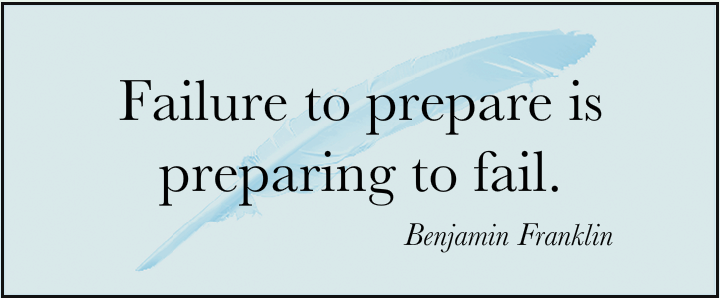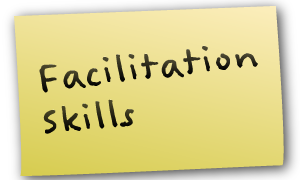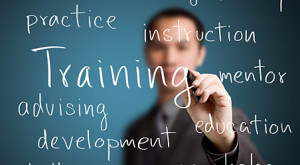
In sales, customer service or any other customer facing role, conversations need to be planned. To be clear, the conversation should feel spontaneous and natural; it should also follow a structure and some principles to maximize the probability of success.
Success, specifically when it comes to learning the needs of your customers, means:
- Understanding the customer’s needs to be able to position your products or services effectively and to have the information to close the sale
- Having the information to avoid, anticipate or mitigate risks and to overcome objections
- Ensuring both parties have met their goals
Some of the bad habits present when learning customers’ needs
- We make assumptions about customers and don’t ask questions we should
- We ask questions as they come to our mind and not in a structured way
- We ask questions focused on us and not them (e.g., do you need product X?)
- We start with close ended questions and not by opening the conversation to learn more
- We interpret silence as an objection. We go to the next question or assume a negative response
- We ask questions we already have answers to because we didn’t listen well or take notes
- We ask questions without a purpose
- We give our customers control of the conversation as soon as they interrupt or ask something
- We focus only on what the customer asked for and not on understanding all of their needs
- We’re eager to make an offer even if we don’t have all the information we need
These bad habits result in customers’ loss of trust and waste of time. More importantly, it limits our ability to fully understand our customers’ needs.
To ensure we are enroute to success, we propose nine principles that will maximize the probability of success for our customers, our organizations and us.
The learning needs principles
1) Start with open ended questions, and then ask closed ended ones as needed
- Get customers talking to learn more about them. Let them talk and feel comfortable with you and the conversation
- Opening the conversation will typically limit the number of questions you need to ask
- When your first question is not understood, try again. Rephrase the question, keep it open and avoid the temptation of asking an easy close ended question
- Open ended questions start with what, how, tell me more, explain to me, walk me through, how do you, etc. They can’t be responded with a Yes, No, or a number
- Use close ended questions to get details or confirmation of what you heard. Also to get customers talking if they don’t respond to several open ended questions
2) Ask about all lines of questioning
- Lines of questioning can be understood as lines of business, the use customers will give to your products or services or the most important features that customers look for (e.g., sound and video for a TV)
- For B2B start by asking a question or two to understand the business overall (e.g., what they do, how they do, what their work flow is like, processes, lay out). Use the questions that will help you learn the most about the business. This will get the customer talking and help you build rapport. It will also help you make better questions and limit the number of questions you need to ask
- Structure the lines of questioning in a logical way starting with the area the customer expressed interest about. Avoid jumping back and forth between lines of questioning and make sure the conversation flows naturally but following a structure
- Prevent the customer from having to visit/call you again to get more information by asking about all the needs they have, including ancillary products and services (if part of your offering)
- Ask about the different pain points or specific needs related to the lines of questioning. Not only in the use of the product itself but even more importantly in how that impacts the user or the business (in B2B)
3) Ask about the different users and about the decision-making process (B2B)
- Make sure you understand the needs of all the people who are going to use the services or that are going to be impacted by its use. In B2C this could include significant others, children, parents, roommates, grandparents or others. In B2B this includes co-workers, leadership, clients, suppliers and others. We frequently focus on the needs of the people who we’re talking to, which doesn’t necessarily cover others’ needs
- Understand the different ways in which the products and services are going to be used by the people above. For B2B learn also about the impact the use will have to their work
- For B2B focus on understanding the decision-making process and the role that different people play in the process (including the person you are talking to). No matter who you’re talking to (even if they are not the decision maker), they are still a great source of information about needs but to advance in your goal you need to understand people and process
- Ask about the different pain points or specific needs attached to the different users or stakeholders. Not only in the use of the product itself but even more importantly in how that impacts the user or business (in B2B). Be thorough in understanding pain points, especially in B2B these should include strategic, operational and financial pain points and others relevant to the business
4) Don’t make assumptions
- The way we think about our potential customers or clients is shaped by our past interactions with clients or customers. This is dangerous because, sometimes unconsciously, we start profiling our customers to the point where “we know what their needs are” without even asking. The result, we don’t ask questions about certain areas of interest because “we know” they won’t be interested and we limit our opportunities
- To be more clear, assumptions about our customers limit our understanding of them and their needs and therefore limit our opportunities to satisfy them
5) Refrain from making an offer until you have all the information you need
- Wait until you have a comprehensive understanding of the customer before making an offer to ensure it’s the right one
- Offering something in the middle of a conversation and then going back to asking questions to understand needs will confuse you and the customer
- As soon as we offer something the conversation becomes about the offer and its price and not about the customers’ needs
6) Be tenacious when they interrupt to say or ask something, regain control of the conversation
- Make sure you let the customer know that you are listening to them by acknowledging what they did, said or asked
- Let them know why you need to continue learning their needs (i.e., to provide a comprehensive solution or answer to their question and needs) and ask for their OK to keep focused on learning needs
- If you have to take care of the customer’s question immediately then do so and frame it as a partial answer/ offer/explanation. Attempt to be brief, while answering the customer’s question
- Then ask a question of your own to get back control of the conversation
7) Ask questions with a purpose
- Have a goal for every question you ask, it will show the customer you value their time and help you be more efficient
- Ask as many questions as you need and as little as possible. It’s not about a number of questions but about the right questions to understand the customer’s needs
- Good questions will add to the trust the customer has on you, bad ones will take away from it
8) Silence? Wait!
- During a conversation, silence typically means someone is thinking
- It doesn’t mean they don’t understand or dislike your question or you, therefore, don’t get defensive. Give customers the time they need to think about it
- I recently read that 8 seconds is the average time a person takes to think about a question and start answering to it. Time yourself being quiet for 8 seconds right now, realize it feels like a lot when in silence. Learn to be comfortable with it
- Past the 8 seconds you can either repeat the question with a slightly different phrasing or clarify what the question is asking. What you shouldn’t do is answer your own question or abandon the question and move to the next one just because a short silence made you nervous
9) Record the information
- Take notes of customers’ needs whenever possible during the conversation. Your focus should still be in listening (and not on taking notes). The more and better notes you have, the better prepared you will be
- Have a template to take notes that will help you structure the conversation and help you identify areas of questioning or people/users/stakeholders whose needs and pain points you need to understand
The above principles are guidelines that need to be tailored to the needs of each business. Changes should be made depending on the type of products and services that are offered, on the type of clients (e.g., B2C, SMB, Enterprise, etc.) and on the channel (e.g., inside sales, field sales, retail).
What remains clear is that without a well-defined structure for the conversation, and a learning process that helps your team members learn and adopt the changes to the way they have been doing things, many of the old sales habits will continue to live in your organization, limiting its growth.


 Most conversations, whether you’re in sales, customer service, retention or any other customer facing position, start with a greeting. Then they move along until close and follow up.
Most conversations, whether you’re in sales, customer service, retention or any other customer facing position, start with a greeting. Then they move along until close and follow up.



